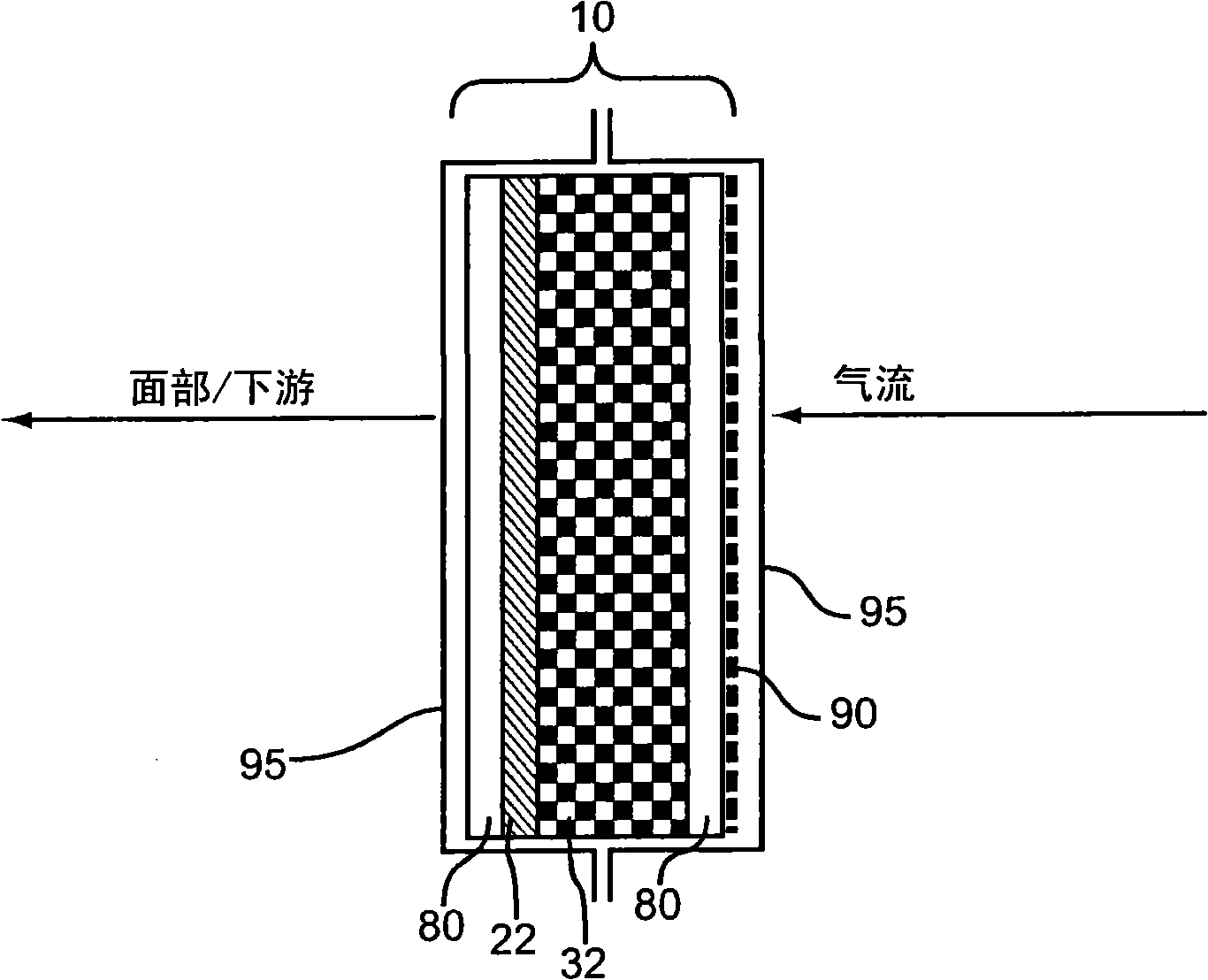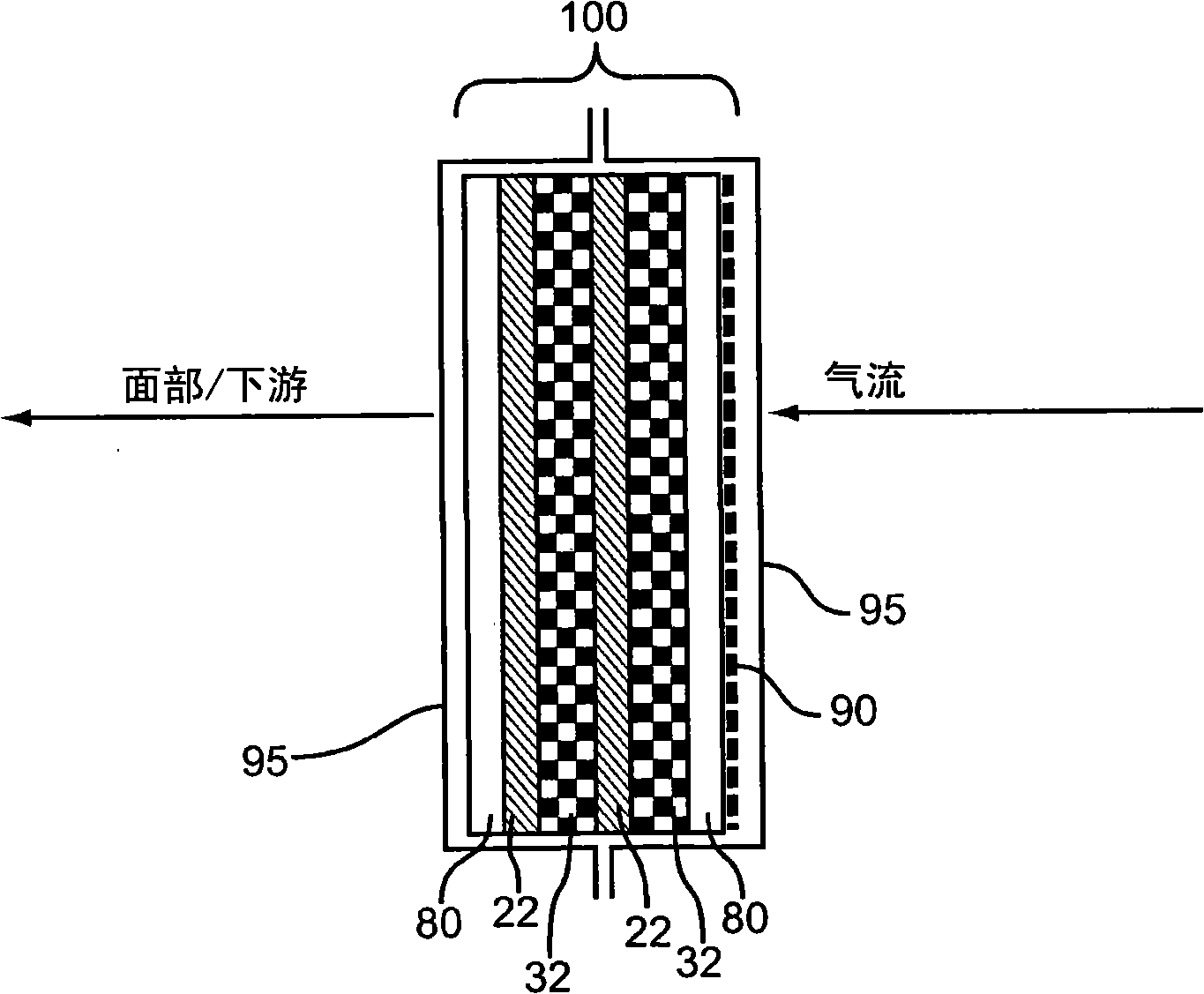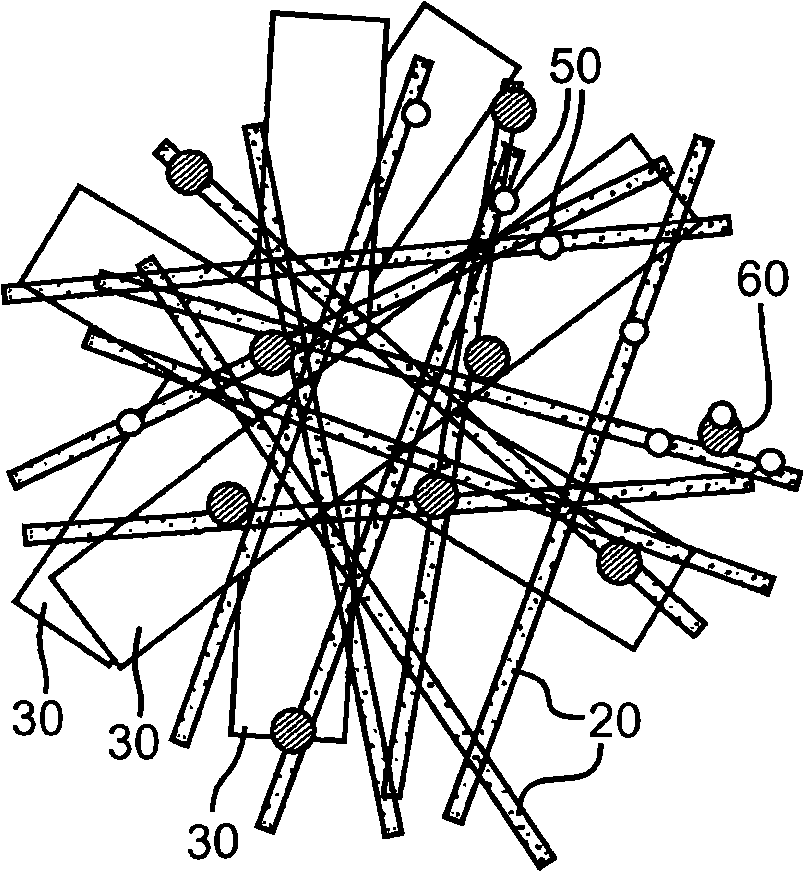Nanofiber filter facemasks and cabin filters
A nanofiber and microfiber technology, applied in membrane filters, filtration separation, dispersed particle filtration, etc., can solve the problems of undurable and uneconomical filters
- Summary
- Abstract
- Description
- Claims
- Application Information
AI Technical Summary
Problems solved by technology
Method used
Image
Examples
example 1
[0063] Example 1: Method and conditions of electrospinning process for producing nanofibers
[0064] Pellets of Nylon 6 were added to 98% formic acid in appropriate proportions (i.e., 15, 18, 21 and 24 wt% N6 to 98% formic acid) and placed in an electrospinning machine (available from KES Teng Technology Co., Ltd. (Japan) obtained from NEU-010 nanofibers) for mixing. The machine has an electrode voltage of 25 kV, a tip-to-collector distance of 14 cm, and a 0.72 mm 3 / s to 1.45mm 3 / s jet feed rate. After the polymer mixture was collected from the machine, it was allowed to stand at room temperature overnight or until a honey-like viscous liquid formed. Optionally, an ultrasonic generator can be used to mix the polymer suspension and solvent.
example 2
[0065] Example 2: Method of Meltblown Process for Producing Nanofibers
[0066]Melt blowing (MB) technology is used to produce nanofibers directly from polymers or resins using high velocity air flow or other suitable forces. The MB process uses five elements: extruder, metering pump, die assembly, web forming and winding. The extruder consists of a heated barrel with a rotating screw inside to melt the polymer and pump it into the die assembly. The die assembly has a die nozzle (nose), which is a wide, hollow metal cone with several hundred holes along its width. The polymer melt is extruded through the orifices to form filament bundles which are then attenuated by high velocity hot air and exit the top and bottom sides of the die nozzle to form fine fibers. High-velocity hot air is generated by an air compressor and passed through a heat exchange device. Typical gas temperatures range from 230°C to 360°C at velocities of 0.5 to 0.8 times the speed of sound. Then, the n...
PUM
| Property | Measurement | Unit |
|---|---|---|
| The average diameter | aaaaa | aaaaa |
| Thickness | aaaaa | aaaaa |
| The average diameter | aaaaa | aaaaa |
Abstract
Description
Claims
Application Information
 Login to View More
Login to View More - Generate Ideas
- Intellectual Property
- Life Sciences
- Materials
- Tech Scout
- Unparalleled Data Quality
- Higher Quality Content
- 60% Fewer Hallucinations
Browse by: Latest US Patents, China's latest patents, Technical Efficacy Thesaurus, Application Domain, Technology Topic, Popular Technical Reports.
© 2025 PatSnap. All rights reserved.Legal|Privacy policy|Modern Slavery Act Transparency Statement|Sitemap|About US| Contact US: help@patsnap.com



